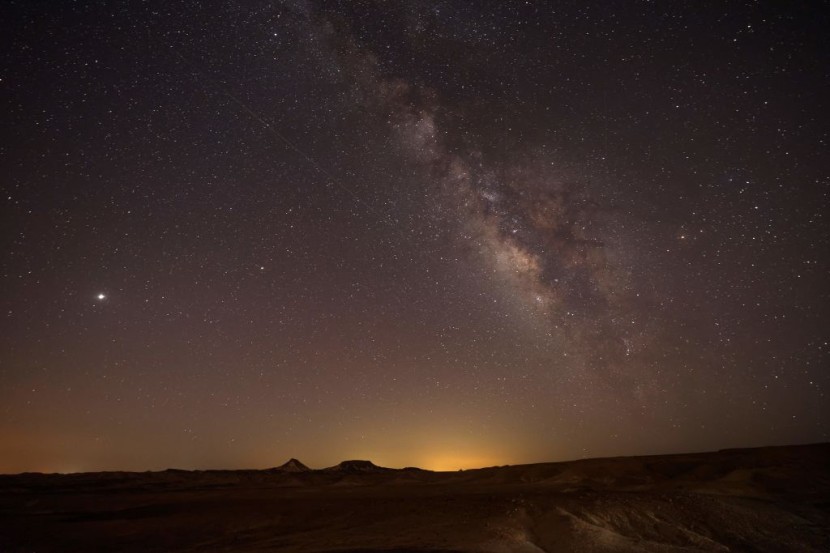
Astronomers discovered a fast-moving star that is circling around the Milky Way's black hole in just four years, making it the fastest one that experts have found so far.
The cosmic body is known as S4716 and orbits Sag A*, the black hole located in the center of our galaxy, at blistering speeds. Comparatively, our Sun moves around the center of the Milky Way at a much more leisurely pace, once every 230 million years.
Fast-Moving Star
The star and its high-speed cluster neighbors have been dubbed "squeezars," a name that was first suggested by scientists Tal Alexander and Mark Morris in 2003. It describes a class of star that follows a highly eccentric orbit, which is more elongated than circular, around a supermassive black hole.
This specific cluster of stars fits that group fairly well as they have really close orbits around Sag A* and astronomers denoted their proximity to the black hole with the letter S in their names. In the last decade, experts have identified the cluster that S4716 is a part of, beginning with a star called S2, as per Universe Today.
At first, astronomers thought that it was the closest star among the cluster to the supermassive black hole. They were able to measure its speed at roughly 3% of the speed of light. Later, they found another star that was even closer to the black hole, eventually discovering several others, S4714, S4177, S4713, and S4715.
The stars around our galaxy's black hole have breathtaking speeds due to orbital mechanics where an orbiting object's speed is affected by the mass of the object that it is orbiting and the radius of the orbiting body.
According to Space, S4716 is traveling the vastness of space at roughly 18 million mph or almost 5,000 miles per second. With its position, the fast-moving star comes as close as 92 million miles to our galaxy's black hole.
Milky Way's Black Hole
While many people would see this as a very distant number, it is only 100 times the distance between the Earth and our Sun, which is a relatively small distance in cosmic terms. For example, our Sun orbits Sgr A* at a distance of 26,000 light-years, with each light-year equivalent to 5.9 trillion miles.
The discovery of a star so close to our galaxy's black hole could change astronomers' understanding of how the Milky Way has evolved and especially regarding its fast-moving central stars.
In a statement, Masaryk University in Brno astrophysicist Michael Zajacek said that the short-period, compact orbit of S4716 is quite puzzling to experts. He noted that stars cannot form so easily near the black hole due to its powerful gravitational pull.
They believe that S4716 had to move inwards, for example by approaching other stars and objects in the S cluster, which caused its orbit to shrink significantly. Despite S4716 being the fastest in its cluster, S2 is arguably the most popular among the group.
This is because it behaves like a large person sitting in front of another individual in a movie theater, blocking the view of what is important. Our view into the center of the Milky Way is therefore often obscured by S2, said Florian Peissker, an astrophysicist at the University of Cologne and co-author of the new research, Sci-News reported.
Related Article:
Star Formation Deciphered With the Discovery of the Largest Alcohol Molecule Ever Seen in Space
© 2025 HNGN, All rights reserved. Do not reproduce without permission.








